Have you heard of a one-pot meal? As the name suggests, such meals are cooked in a single pot. Doesn’t that sound convenient? After all, you would be able to save some dishwashing time!
If you want to learn how to make jollof rice at home, Click Here.
One famous example of a one-pot dish is of the Wolof rice, also called Benn chin (“cooked in a single pot” in Wolof), fat rice (Ivory Coast), or jollof rice (Ghana and Nigeria). It is a popular meal in West African countries such as Ghana, Nigeria, and Senegal.
You can think of Jollof as a culinary category. So, many types of dishes, with varied ingredients and recipes, fall into this category. However, they have one common feature: they are all prepared with fatty rice and a single pot.
Since rice is a staple food found in almost every kitchen worldwide, it’s quite likely that many non-Africans have a taste for Jollof too. If you haven’t had it before, consider trying it. But before that, you should probably know a bit more than about rice and Jollof, so read on!
This blog will discuss its History of Rice in Ghana, cultivation, varieties, species, etc. Additionally, it will look at the importance of rice in Ghana, where it is cultivated, and more.
Are you ready? Let’s dig in!
History of Rice in Ghana
Early rice cultivation is found in many cultures, including India, China, and Southeast Asia civilizations. However, the earliest archeological evidence comes from central and eastern China that dates to around 7000 BCE.
More than 90% of the world’s rice is grown in Asia, especially in China, India, Indonesia, Pakistan, Bangladesh, etc. Additionally, it is cultivated in parts of Europe as well as Australia, North and South America.
The rice plant is grown in tropical, subtropical, and temperate regions. Rice required plenty of water to grow, paired with regular periods of sunshine.
Rice yields vary considerably, ranging between 700 to 4000 kg per hectare, mainly depending on the irrigation system’s quality.
Rice: The nutrient-rich staple!
Cultivated for millennia in Asia, rice is now consumed all around the world. It is the staple food for about half of the world’s population. Interestingly, it has been reported that around 23% of all the calories consumed in the world come from rice.
Given below are some of the details about the cereal grain known to us as rice:
- Rich in fiber
- Source of group B vitamins
- Source of manganese and selenium
- Rich in antioxidants
- Type: Cereal
- Family: Poaceae
- Origin: South America, Africa, and Asia
- Season of cultivation: September to April
- Color: White to black
- Flavor: Neutral
Rice species
Did you know that rice has races too? Let us look at them, one by one:
Japonica Rice: This rice species are grown in the cooler zones of the subtropics and the temperate zones.
Javanica: This type of rice belongs to the Japonica race of O. Sativa.
Indica: It is one of the significant types of rice grown in the tropics and the subtropics.
According to Universal’s Encyclopedia, aromatic rice such as Indian basmati rice and Thai Hom mali rice fall under the indica subspecies.
The classification of Asian rice into two subspecies, Indica, and Japonica, is based on molecular bases (genome organization, ploidy, level of genome homology, etc.) and reproductive incompatibility.
Fun fact: Indica and Japonica correspond to two domestication events on both sides of the Himalayas.
Rice Varieties
If you go to an average supermarket, you will find around ten varieties of rice. Interestingly, there are over 40,000 varieties cultivated all around the world. Given below is a list of some of these types
1. Basmati
Basmati rice is the king rice in Pakistan, India, and the Middle East. Pure Basmati can only be grown and harvested at one place in the world, and that is the foothills of the Himalayas.
Uniquely, Basmati rice grains expand more than twice its dry length when it is cooked. However, it only grows lengthways, unlike the other rice varieties, and retains its slender look.
2. Wholegrain or brown
Wholegrain or brown rice has its bran layer intact and possesses a nutty flavor. Since it is rich in fiber and nutrients, it is considered a healthy choice to be included in a balanced diet.
Moreover, it has a low to medium glycemic index, which helps you feel fuller for longer. If you want to add rice to soup, salads, and vegetable mixtures, go for brown or wholegrain rice.
3. Jasmine
Jasmine rice is also called Thai fragrant rice, and it is a shorter grain with a sticky texture. As the sticky grains are glutinous, it is a great choice to be paired with the sauces that easily cling to the rice.
Although jasmine goes well with Thai cuisines, it is also well suited for Chinese and southeast Asian dishes.
4. Long-grain
This type is consumed all around the world. The grains remain separated even after cooking and have a subtle flavor.
5. Pudding
Short-grain rice or pudding rice is used to make various types of puddings. It is round and releases a lot of starch while being cooked. As a result, its texture is creamy and soft after cooking.
6. Paella
Two of the famous types of Paella rice found in Spain are Bomba and Calasparra. These grains are shorter than the long-grain, are spherical, and absorb twice the amount of water/liquid consumed by other varieties.
Paella retains most of the starch content when it is cooked, so the rice remains separate. Unsurprisingly, it is used to make Paella, a dish that is not stirred while cooking, helping the grains retain the starch.
7. Risotto
Different forms of Risotto rice come from other regions of Italy. Arborio is one such famous type of Risotto.
The grains of Risotto release a lot of starch while being cooked, resulting in a soft and creamy mass.
8. Sushi
Sushi rice contains just the right amount of starch to be shaped into balls that will not fall apart (hopefully!). It is slightly sticky, but the grains remain separated after being cooked.
The short-grain variety of sushi is mostly grown in Japan and is known as Uruchimai. Nonetheless, California, Italy, and Spain also produce many sushi rice types to meet the local markets’ needs.
9. Wild
Wild rice is not rice! In fact, it is a grass seed found in the U.S. It is mixed into long-grain rice to add texture, color, and flavor. It tastes sweet and is chewy with a lot of proteins and fiber.
Characteristics and nutritional value of rice
Rice is a plant that grows in clumps of stems, ranging from less than a meter in height to more than fifty meters. The grain of rice is the fruit of the plant.
Rice is a cereal, so it is a part of the starchy foods in our diet. One serving of rice corresponds to 120 to 150 grams of cooked rice.
Moving to the nutritional value of different rice types, you can find around 4 grams of proteins in a cup of white rice, and this amount increases to 5 grams in the case of brown rice.
On the other hand, although wild rice is not a rich source of proteins, it is still regarded as a complete protein, i.e., it contains all nine essential amino acids. Moreover, wild rice’s fiber content is the same as brown rice, each serving 1.8 grams per 3.5 ounces.
Which rice type is the most famous?
Basmati rice remains the traditional rice par excellence, which is mostly cultivated in India and Pakistan. With a little nutty flavor, it is fragrant rice, which is ideal for accompanying sauce-like dishes.
Interestingly, Basmati rice is also used in traditional dishes such as veal stew, be it the Asian recipe or the Western one.
Along with Basmati, Thai rice is one of the most widely consumed rice in the world. Grown in Thailand (hence the name), it stands out with its pleasant jasmine flavors. Just like Basmati, it also complements many dishes.
Is eating rice good or bad for your health?
Several myths related to rice consumption being harmful to the body revolve around us from time to time. Are all of them correct? Let us take a look below.
1. Rice is a natural dose of energy
You might have heard people blaming rice for the after-meal dizziness. Nonetheless, rice is rich in carbohydrates, which boost energy levels.
These carbohydrates exist in long chains, so they take longer to break down and keep your tummy full for quite a while.
2. It is nutrient-rich
Rice is a powerhouse of several nutrients. In fact, all varieties of rice contain a lot of minerals and vitamins.
Moreover, rice is easy to digest and has less saturated fats as compared to other foods. So, it is also better for the health of your heart.
3. It is suitable for digestion
If you are suffering from a stomach ailment, then rice is your friend and the best alternative to go for. It is easy to digest, and the fiber contained in it helps reduce constipation and other stomach-related illnesses.
These qualities are impressive but are rice always healthy for consumption? The answer is No and here is why:
Too much starch
Rice contains many starch, so it is not a good idea for people with diabetes to consume rice in large amounts. Therefore, always keep a check on the quantity of rice you consume.
Doing so will help you get the most out of the nutrient-dense cereal.
High glycemic index
Although rice is loaded with minerals and nutrients, it has a high glycemic index, leading to diabetes.
Hence, too much rice, especially white rice, should be avoided to live a healthy life.
Why is Basmati rice so expensive?
The Basmati version of rice is known to be safer than the white variety and contains dietary fiber, essential fatty acids, and a range of nutrients found in the germ. Moreover, brown Basmati has a more nutty and firm texture than white rice.
Basmati rice is expensive as its grains are long and slender compared to regular rice, and it is always aged. This means that its grains have to be aged for around two years, adding to the rice’s overhead cost.
Japan and the world’s highest quality rice
Toyo Rice Corporation developed the world’s highest quality rice in 2016 to improve Japanese rice perception in the world and offer hope to rice producers in Japan.
This certification was awarded in November 2015, when the 17th International Contest on Rice Taste Evaluation was organized by the Association of the Certified Rice Appraisers in Komatsu City.
Six rice varieties were carefully selected among 18 brown rice varieties, and they received gold medals, paired with certificates, as the highest quality rice in the world in the International category.
Toyo Rice Corporation will continue developing its highest quality rice globally to promote Japanese rice quality and Japanese rice processing technologies worldwide.
Growth of rice in Ghana
Growing rice in Ghana is a significant challenge, mainly due to low-quality seeds and insufficient rainfall. Recently, rice demand has increased, so a lot of it is being imported from countries such as India, Pakistan, and Thailand to meet this demand.
Although about two-thirds of rice in Ghana is grown in the Northeast and Upper East regions, many smallholder rice farmers who dominate the local rice industries have little access to good quality plants.
As a result, most rice varieties grown are of poor quality and have low prices. Although rice-producing areas contain irrigation systems, the total amount of irrigated agricultural land remains small in Ghana.
Additionally, a drop in rice production has been caused by the lack of rainfall in Côte d’Ivoire, which was the leading rice producer in West Africa in 2015/16.
Unfortunately, both the cultivation areas and production have decreased by 27% to 1 million hectares and 1.3 million tonnes, respectively.
According to the USDA, other factors like recent year’s lack of funding, insufficient seed supply, limited rice mill capacity, and low market prices have deterred some farmers from growing rice.
Farmers in Ghana are not the only ones facing challenges, including high post-harvest losses and low grinding of local rice. In fact, farmers from all around the world continue to apply unsuccessful farming methods.
They need the right dressing platforms and storage facilities in all parts of the rice value chain, including production, processing, commerce, and marketing. They also need to be taught the skills to network, lobby, negotiate, and support better policies.
What has Ghana done to reduce the import of rice?
The government of Ghana embarked on a proactive policy to reduce imports by 10% by 2020, and the first results were to be palpable from the 2017/18 campaign.
The government also subsidized rice and corn seeds by 50% and fertilizers through the Planting for Food and Job Campaign program. Unfortunately, none of these mechanisms has proved significant results.
Nevertheless, the introduction of high-yielding, disease-resistant seeds and the adoption of low-cost water management practices are expected to boost rice production.
How much does a bag of rice cost in Ghana?
In contrast to the rice grown in Ghana’s soil, Ghanaians have long developed a strong sense of taste for foreign rice produced.
The Ghana market is currently dominated by international rice brands from Asia, Europe, and the U.S., with importers cashing big from their enormous client base.
Currently, Ghana imports rice worth approximately $1.5 billion. The vast import salary bill has a negative effect on the Ghanaian cedi’s currency. Therefore, a 5 kg rice bag costs GHC 34, while a 25 kg bag is priced at GHC 165.
Why is it time to promote Ghanaian rice?
Investment in rice is made according to its perceived proportion of value as every other commodity. So, Ghanaians can either choose to buy and eat rice from foreign countries or sponsor Ghana rice.
Ghana rice is healthier and more nutritious than the imported rice as most international rice spends about 5-10 years in warehouses abroad and is handled with noxious chemicals.
Government officials have encouraged the consumption of locally-grown rice from time to time. According to the Deputy Minister, doing so would be an act of patriotism and create a market for Ghanaian rice producers.
Similarly, President Akufo-Addo has also called for the consumption of local rice to support the food industry. In an address on National Farmer’s Day, he said, “We must eat what we grow to motivate our farmers and support the local food industry’s development.”
Final words
Rice is rich in nutrients and minerals and serves as staple food worldwide. It is grown widely in India, Pakistan, Bangladesh, China, etc., and has also made its way towards Australia, Europe, South, and North America.
It is found in many varieties like Basmati, wholegrain, pudding, sushi, etc., and is paired with different dishes throughout the world.
Although rice offers numerous health benefits, it must be consumed moderately to avoid health complications as it has a high glycemic index.
Ghana produces nutritious and flavorful rice domestically. For your next bowl of Jollof, consider buying some Ghanaian rice and support local farming; it’d be a healthy investment!
Happy eating!
Read About: How to Make Jollof Rice

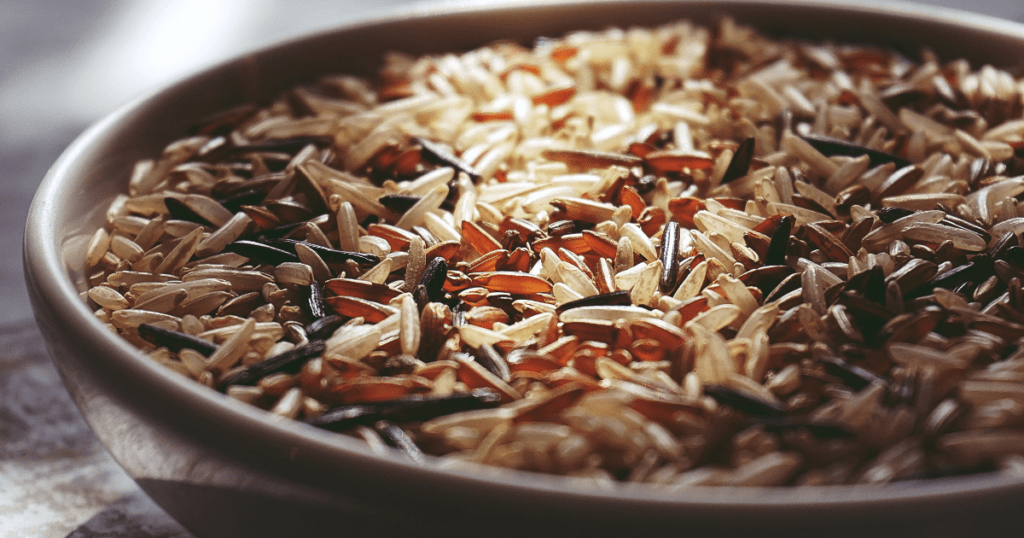
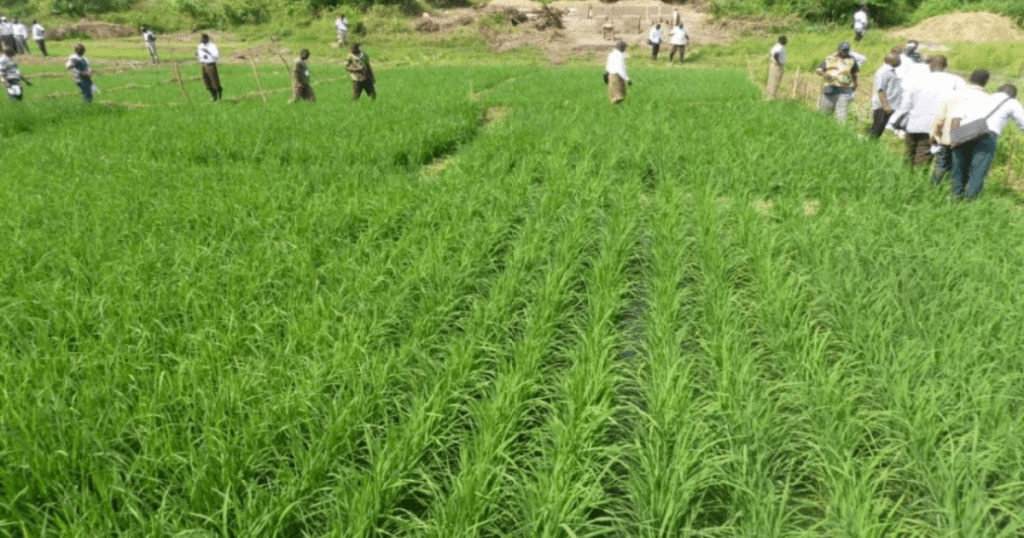
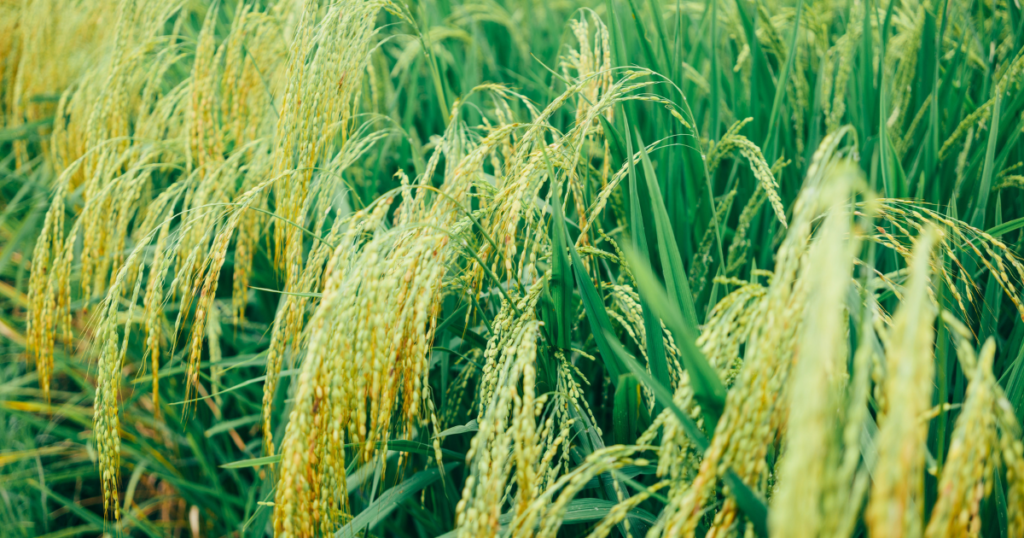
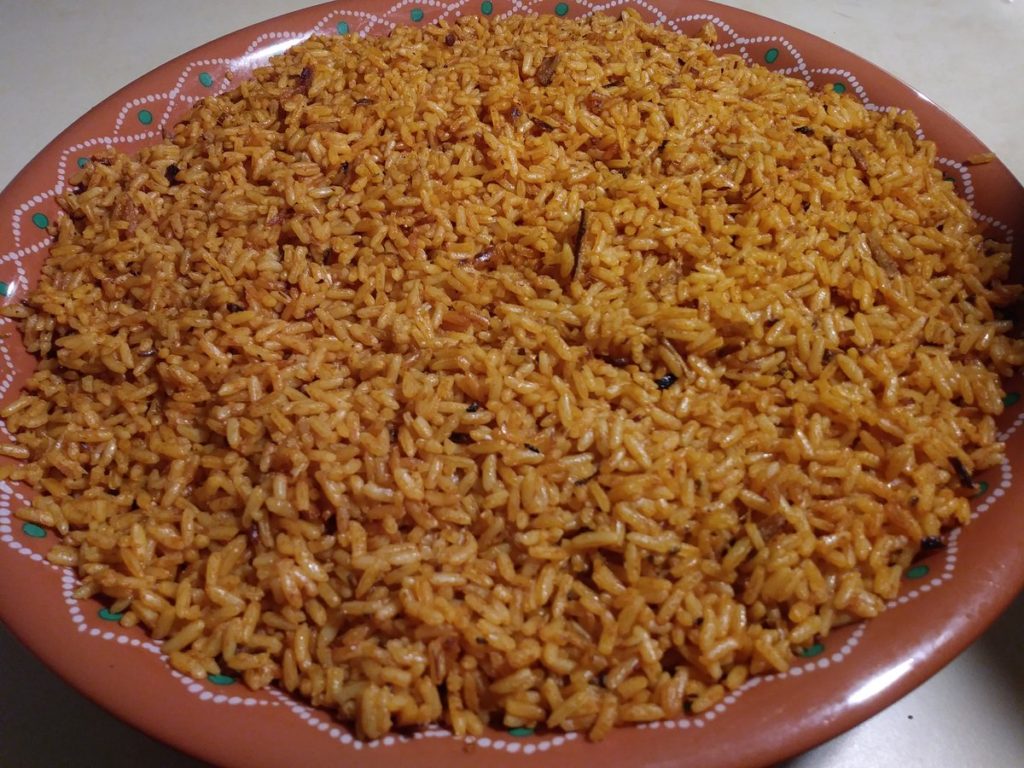
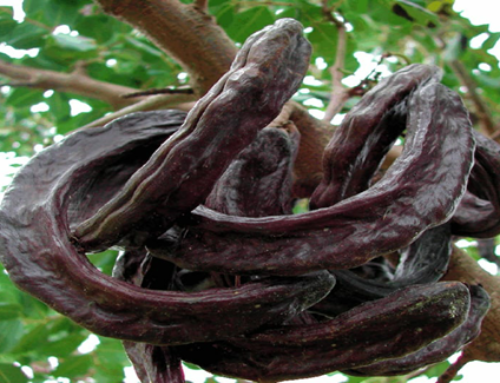
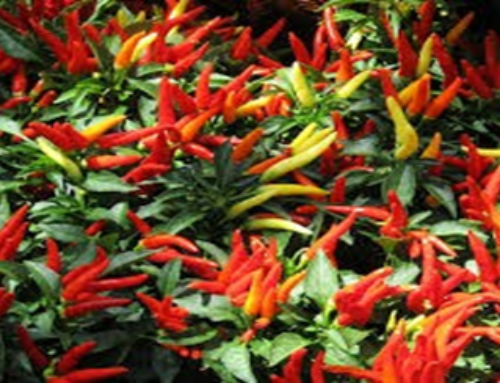
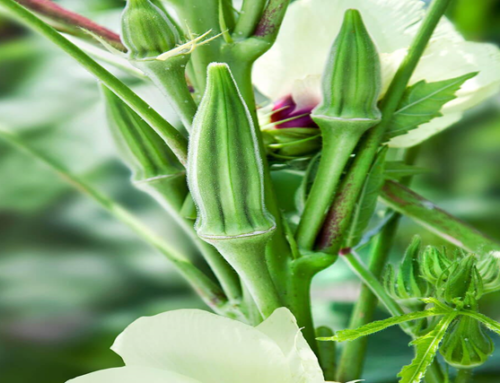
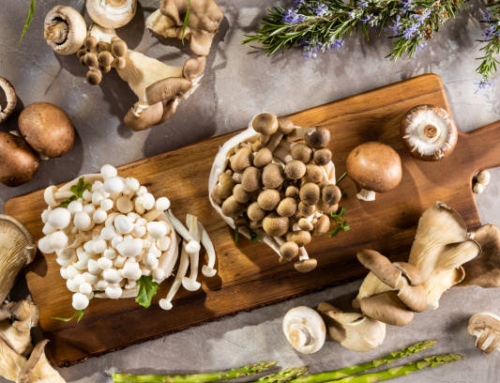
Leave A Comment